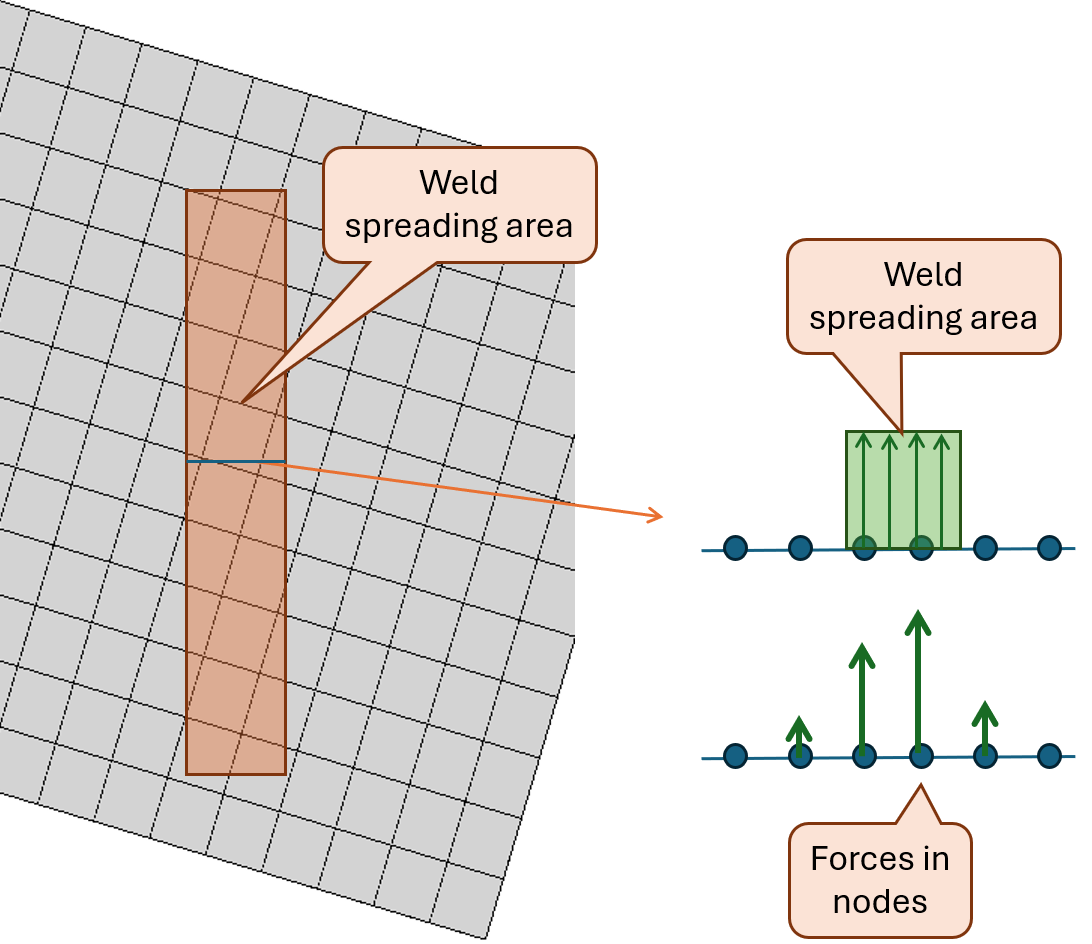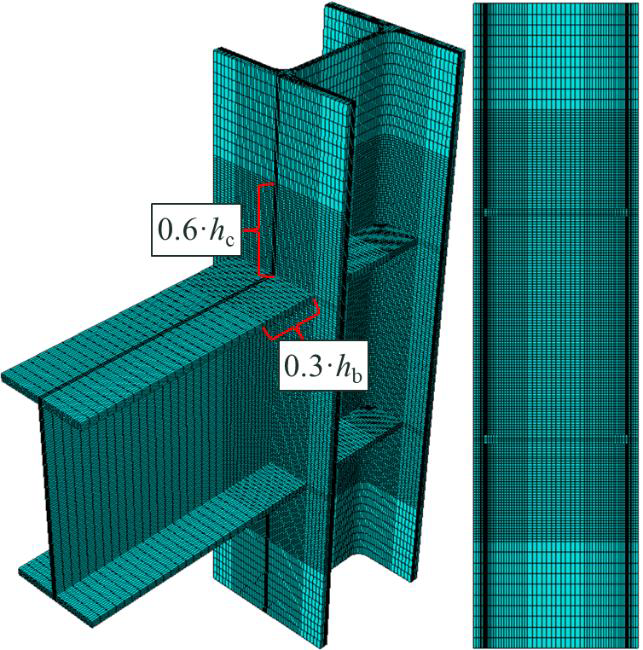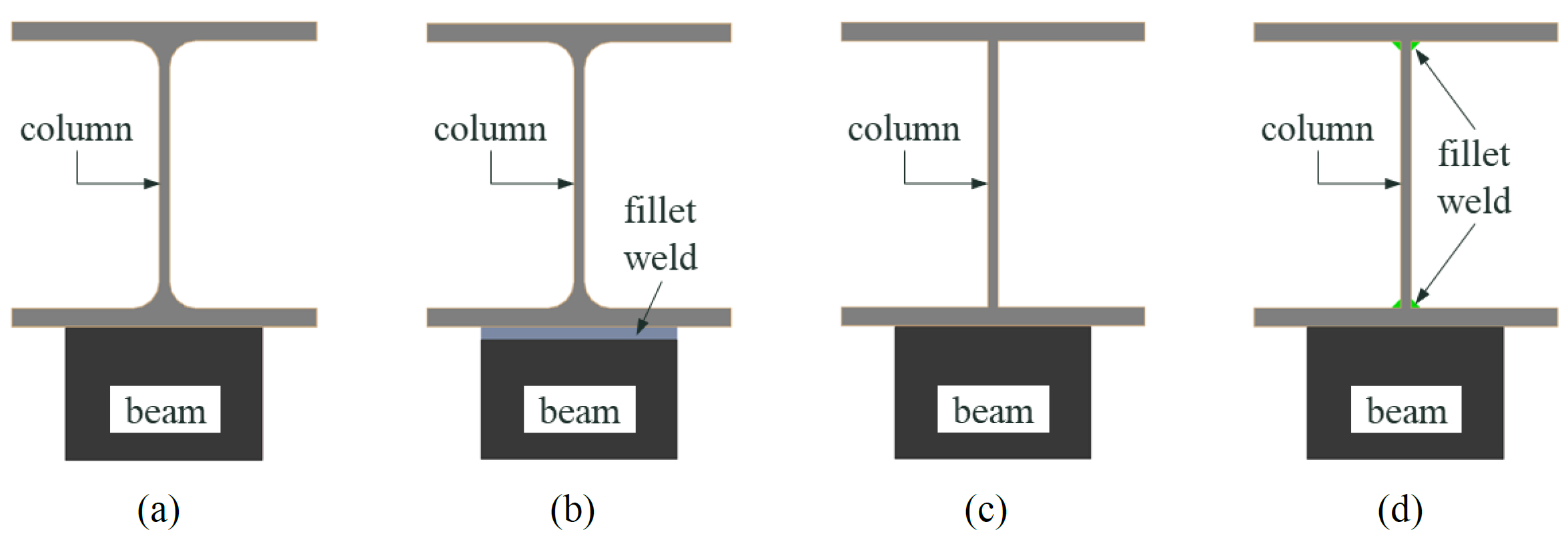Weld spreading area
The weld spreading area is slightly changed in version 25.0. In the following article, it is clearly explained how the distribution of forces works from one plate to another through welds now.
The weld spreading area differs greatly between butt welds and fillet welds. The spreading area from the plate edge to another plate surface is defined according to the following figure:
The force coming from the edge plate is then distributed into the nodes of the surface plate based on the vicinity of the node to the weld spreading area.
What does the change in version 25.0 entail?
- The spreading area was decreased for butt welds
- The spreading area of fillet welds now more accurately reflects the fillet weld size
- The thickness of the surface plate is now irrelevant for the weld spreading area
Why were the changes made?
- Recently, we ran a joint project with University of Coimbra and ISISE. The project goal was to create a series of numerical models in Abaqus (general finite element software package with solid finite elements) and compare the results to IDEA StatiCa Connection (shell finite elements). The focus is on welded beam-to-column moment connections. The comparison shows that:
- The results of rolled columns without a significant compressive force in the column are in good agreement
- The results of butt-welded columns are slightly unconservative (by 5.8 %). This is why this change – reduction of weld spreading area for butt welds – is made.
Contemplated geometries in the project with University of Coimbra – (a) butt-welded beam to rolled column, (b) fillet-welded beam to rolled-column, (c) butt-welded beam to butt-welded built-up column, (d) butt-welded beam to fillet-welded built-up column
The R&D department continuously works on the software verification and validation and updates of the IDEA StatiCa numerical model. Small changes in the results between versions are therefore inevitable.






